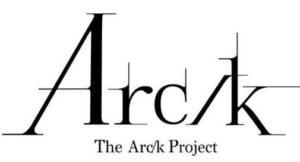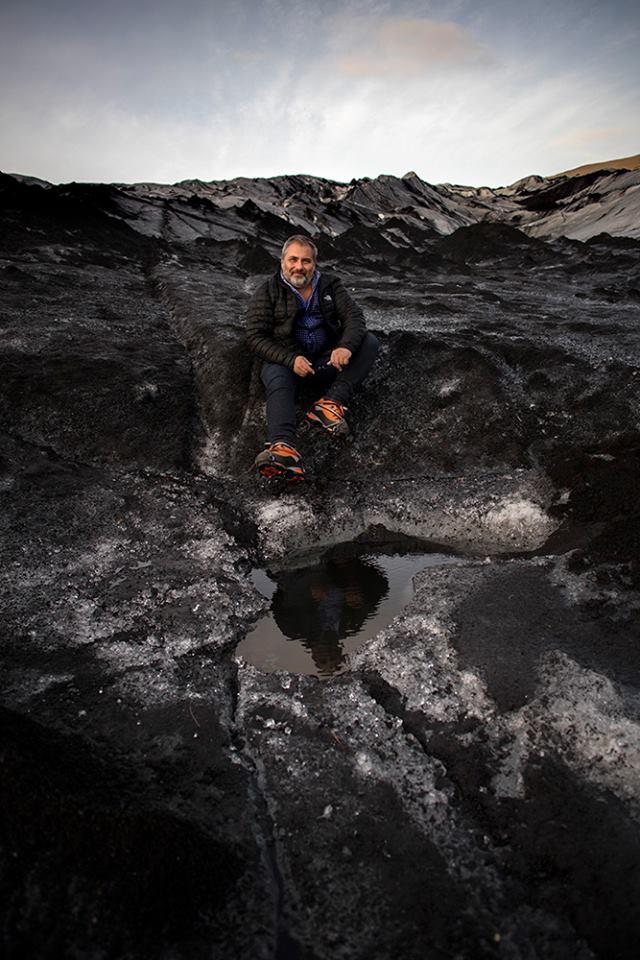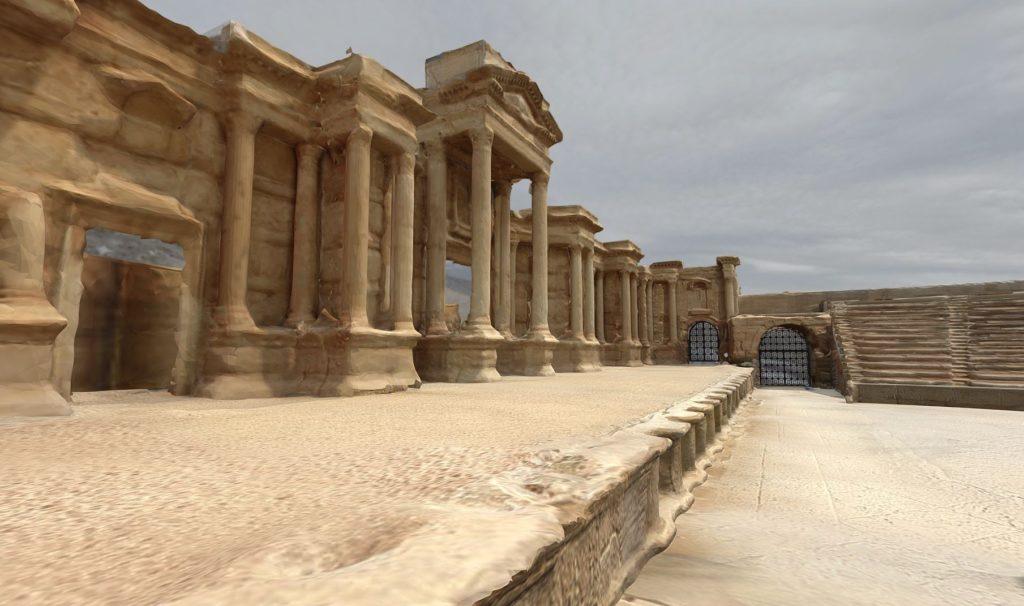The Arc/k Project: Creating 3D Models to Preserve Threatened Landmarks for Future Generations – and for Hollywood
 In March, Syrian troops retook Palmyra Castle from ISIS, who had taken over the city in May of 2015. The castle, also known as Fakhr-al-Din al-Ma’ani Castle, dates back to the 13th century and sits atop a hill overlooking the city of Palmyra. It still stands, thankfully, after the removal of the terrorist encampment, although many other historical and religious sites in the city weren’t so lucky. As long as war continues to rage in Syria, however, no landmark or monument is safe, so a nonprofit is working to digitally preserve those sites – as well as others around the world under threat from terrorism, environmental destruction, and more.
In March, Syrian troops retook Palmyra Castle from ISIS, who had taken over the city in May of 2015. The castle, also known as Fakhr-al-Din al-Ma’ani Castle, dates back to the 13th century and sits atop a hill overlooking the city of Palmyra. It still stands, thankfully, after the removal of the terrorist encampment, although many other historical and religious sites in the city weren’t so lucky. As long as war continues to rage in Syria, however, no landmark or monument is safe, so a nonprofit is working to digitally preserve those sites – as well as others around the world under threat from terrorism, environmental destruction, and more.
The Arc/k Project was founded in 2014 with the goal of creating an online database of threatened historical sites such as Palmyra Castle, a detailed 3D model of which is now featured on the project’s website thanks to high definition video taken by a paraglider. Looking at the model is almost like looking at the real structure: every crack in the stone, every subtle gradation of color in the surrounding hill, even the cars driving past are visible. If the castle itself is destroyed, a digital copy will still exist.
“Our mission is to save endangered cultural assets,” said Brian Pope, founder of the Arc/k Project. “We want to preserve the ephemera of our world—glaciers that are retreating, cities that are changing, statues that are decaying—for future generations in a way never before possible.”
Arc/k’s team of artists and technicians has also managed to create detailed 3D models of monuments that didn’t survive the invasion of Palmyra, such as the Temple of Baalshamin and the city’s theater. While Syria and other countries in the grips of war and terrorism are obviously a major focus, the team is also working to preserve sites threatened by other factors – such as Þingvellir, the site of Europe’s first parliament. Located in Iceland, the site is under serious threat of being damaged or destroyed by earthquakes and erosion.
Not only will Arc/k preserve cultural and artistic history for future generations, it will also help Hollywood to create better sets. Pope, a writer, director and the founder of visual effects studio Cognition, believes that the film industry can take advantage of the Arc/k database to create perfectly detailed, accurate digital backdrops for movies and TV shows.
“We want to satisfy Hollywood’s need for exotic locations, while providing a new revenue stream, through licensing fees, for organizations that manage these sites,” said Pope. “At the same time, we are accomplishing our goal to preserve culturally-significant assets. It’s a triple win!”

Brian Pope at a glacier in Iceland. [Image: Arc/k via Facebook]
“Many schools have to hustle for funds to support classes in photogrammetry,” he said. “Trying to operate and manage a large-scale operation in a faraway and perhaps troubled spot is a real challenge for them. We have technical resources that they lack and a business model to make this very important work economically feasible.”
Right now Arc/k is working with a Canadian heritage organization to create a 3D model of a 19th century steam locomotive. The train is a very popular prop for filmmakers, but its maintenance and operation are highly expensive.
“The 3D model will allow the group to make its asset available to many more productions and increase revenue in a way that’s simpler and less invasive,” Pope said.
Even though Arc/k employs some of the most expert professionals in the digital imaging field, Pope wants to keep the project open to anyone who wants to participate. The growing database will be available to the general public, who can also help to build it. As personal imaging technology becomes more advanced and accessible, it’s becoming much easier for anyone to create high-quality digital images.
“Most people today have a smartphone in their pocket that can be used to record culturally significant objects,” said Pope. “Anyone who gets out into the world can be involved in archiving. They can contribute to our collective memory of who we are and what we are becoming.”
Arc/k’s website includes instructions on photogrammetry techniques and a page where individuals can upload regular photographs that the team may be able to use for digital reconstructions. If you have a fondness for photography, check it out – you may be able to help in building what Pope calls a “digital ark” to save some of our oldest and most significant sites and objects from being lost forever. Discuss further over in the 3D Printed Historical Landmarks forum at 3DPB.com.
Subscribe to Our Email Newsletter
Stay up-to-date on all the latest news from the 3D printing industry and receive information and offers from third party vendors.
You May Also Like
World’s Largest Polymer 3D Printer Unveiled by UMaine: Houses, Tools, Boats to Come
The University of Maine has once again broken its own record by unveiling the largest polymer 3D printer in the world. Surpassing its 2019 achievement, the new Factory of the...
Changing the Landscape: 1Print Co-Founder Adam Friedman on His Unique Approach to 3D Printed Construction
Additive construction (AC) is much more versatile than it seems, at first: as natural as it is to focus on the exciting prospect of automated home construction, there’s far more...
US Army Corps of Engineers’ Megan Kreiger on the State of Construction 3D Printing
Despite last year’s gloomy reports about the financial state of the additive manufacturing (AM) industry, there’s no doubt that we’re actually witnessing the birth of a sector rather than its...
Profiling a Construction 3D Printing Pioneer: US Army Corps of Engineers’ Megan Kreiger
The world of construction 3D printing is still so new that the true experts can probably be counted on two hands. Among them is Megan Kreiger, Portfolio Manager of Additive...




































